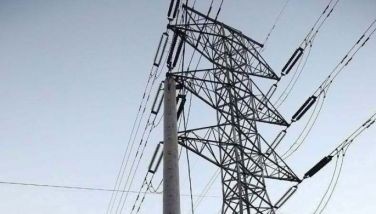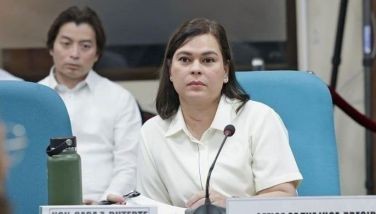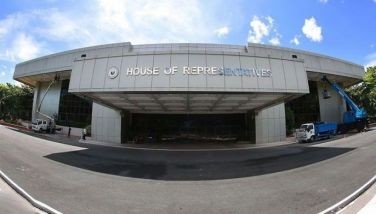No major deliverables

After three hours hearing their explanations or excuses, I asked DOTC Sec. Jun Abaya what can they deliver by June 30 when P-Noy bows out of office? He named a few, and none of those can be considered major.
Ok… if they are able to deliver the car plates and the driver’s license cards, that would be major. Those were the first two Sec. Jun promised and I warned him this may be a “pasagasa sa tren” type of promise again.
Then he said they will deliver three more trains of MRT 3 but that is iffy. They still have to do the 5,000 hours of tests on the first two delivered and even then, with the tracks and signaling system still waiting for rehabilitation, how can they do a proper testing?
The DOTC Sec. said they will expand the point-to-point bus service to cover more points. That’s nice but the numbers will show that even if all the buses are full, the capacity will not begin to alleviate the long lines trying to ride the MRT. The MRT GM admitted they are only carrying less than half a million daily when over 600,000 were riding a few years ago.
But I hope the point to point bus service works, even as a symbolic gesture that DOTC officials are doing something. I hope the experiment will be successful enough to convince commuters to leave their cars at home and relieve traffic congestion. To do that, that new bus system must be drastically scaled up.
The new Caticlan airport will be open before June but that’s a San Miguel project. All it needs now is for CAAP to certify its use and Sec Jun could prod them to work faster so P-Noy can inaugurate it.
On a new NAIA, the ball is still in JICA’s court. The study is being finalized. I understand the Japanese experts are partial to using Sangley or building a 2,000 hectare reclaimed island in Manila Bay, maybe similar to the one in Osaka. That’s feasible but expensive. I have heard local experts urging them to consider a site in Taguig along Laguna de Bay. It will require less reclamation work and will be at the doorstep of Global City, the metro area’s new business and financial center.
In other words, we will be talking about a new NAIA or a new runway at NAIA for some more months into the new administration. It takes up to 10 years to build an airport from groundbreaking. In the meantime, the congestion over NAIA that is causing travel delays and waste of fuel will continue indefinitely.
Sec. Abaya agreed that the proposal of Mar Roxas to build those quick exit taxiways as a means of alleviating the congestion is a good idea. Mar offered that in 2012 but nothing happened. I asked Abaya why.
The Secretary said they needed to get experts to do a study and it took them the last four years to finally get the British NATS consultants on board. They had failed biddings for the service and only managed to get NATS late last year to work on a comprehensive study to optimize air traffic movement at NAIA.
Yes, the construction of the quick exit taxiways is part of the things they have to do. That means they still have to bid out construction after the proposal is finalized. Given their track record in bidding projects, we should expect nothing to happen for the rest of the Aquino watch.
The ATM/CNS system that will modernize air navigation guidance at NAIA will go into full operation only after June 2016. If they moved faster on what former DOTC Sec. Ping de Jesus left behind, P-Noy could claim it as an accomplishment.
The LRT1 extension project which sparked the pasagasa sa tren promise of P-Noy may still be unable to break ground by June. It had been awarded to Ayala’s consortium but they are prioritizing improving the existing line because that is urgent and also because DOTC has yet to deliver the complete right of way for construction to start.
Last week, some disturbing development about the award also came to light with a report that government must fork over P1.8 billion to the Ayala consortium because of unmet government obligations. This has to do with the privatization contract which stipulates a number of assumptions that must be met by both parties otherwise compensation is called for.
Of course, under the PPP, the private sector concessionaire deserves to earn reasonable returns. A delay in construction schedule or if less functioning rail cars were turned over, that affects earning capacity assumed in the bid, government must compensate the private partner enough to cover assumed opportunity cost.
Ayala Corporation’s managing director John Eric Francia told a media roundtable in Makati last week that “if we are stuck, because we inherited a system that is below the base line that were promised in the concession agreement, then we need to be compensated.”
“If they gave all the boxes in the concession agreement, we wouldn’t charge the government anything,” Francia, who is also the president and CEO of AC Infrastructure Holdings Corporation, told reporters.
I agree. The problem I see is that it seems government overestimated its capacity to deliver on the concession agreement. DOTC officials apparently signed off on it knowing a large compensation bill must be paid.
On the part of the Ayala consortium, it also signed an agreement without careful due diligence. They knew they would be compensated anyway if they didn’t get what was promised. Looks like a moral hazard of sort.
Indeed, the ink has hardly dried in the signed agreement when Sec. Jun was reported to have asked the Budget department to set aside P7.519 billion for release to the LRMC (Light Rail Manila Corp), some P5 billion ($107-million) of which to cover penalties because the government’s failure to deliver what was promised.
The penalty payments will get us no new rail car, no new footage of rail track but will go straight to the private consortium’s bottom line. They should have earned that amount through the market via actual operations but DOTC is giving it to them in a silver platter.
Indeed, DOTC turned over the LRT1 to the private group without the contract-stated number of train coaches, there are leaking roofs, the operation is below their agreed upon frequency of trips, the structural integrity of some aspects of the train system is not up to international standards, among others.
Cosette Canilao of the PPP Center says it is premature to quote a figure because it is under discussion. But they are talking about huge penalties which we can assume they knew about even before the contract signing.
They were probably too eager to claim a successful PPP award for a project that had proven difficult to award over three administrations. But DOTC should have been more honest about the real condition of the system and the bidders could have factored all those negatives in the bid. Now it is easy to suspect collusion that amounts to plunder.
How can the government give the Ayala consortium all that money so soon after the award? Shouldn’t it have been offered on an “as is” basis and let the private bidders do their own due diligence as basis for their bid?
Something just doesn’t seem right and DOTC, despite its platoon of lawyers supposedly looking after the public interest, miserably failed us again.
Boo Chanco’s e-mail address is bchanco@gmail.com. Follow him on Twitter @boochanco.
- Latest
- Trending





























